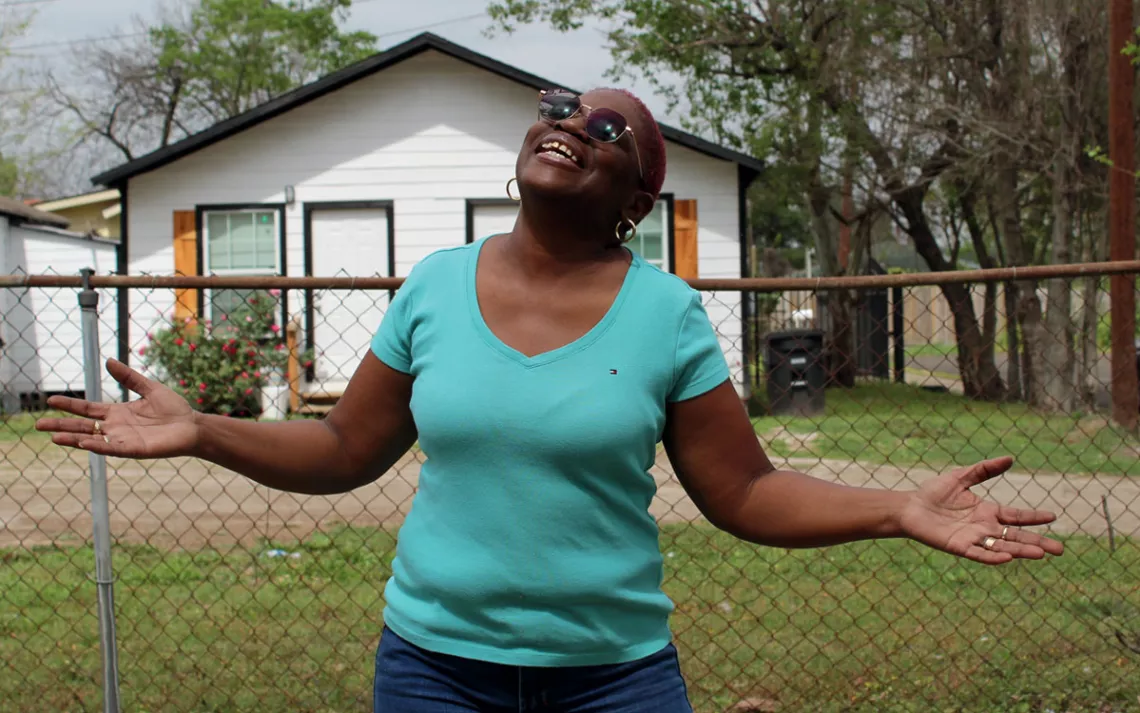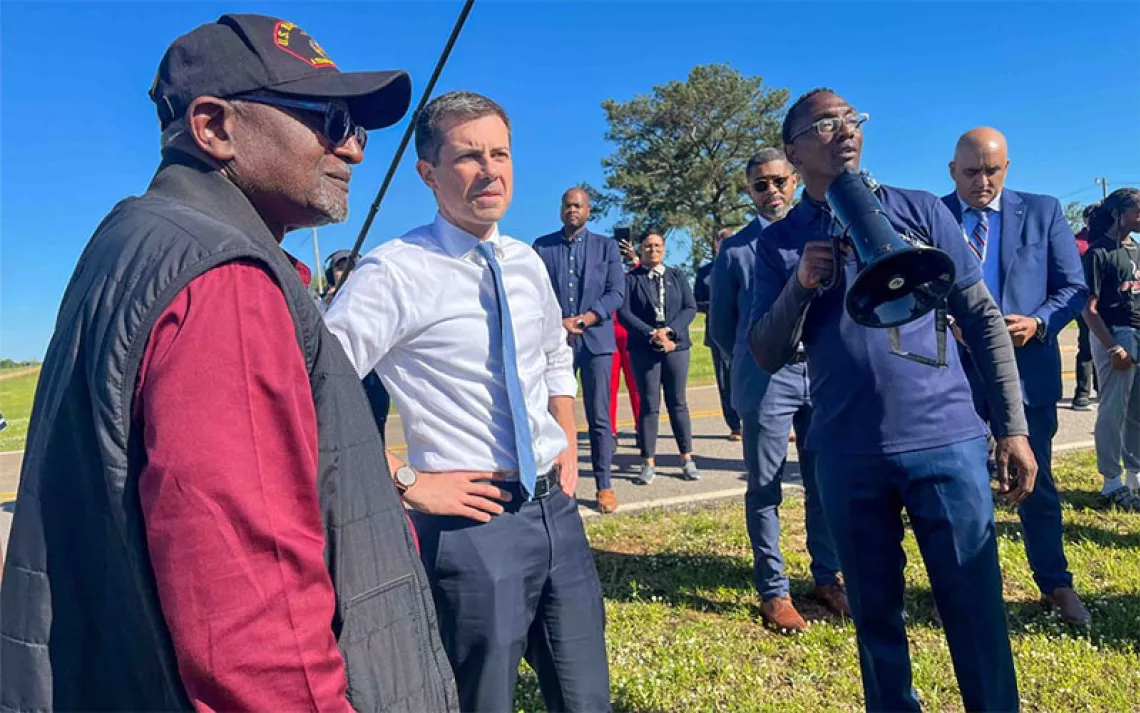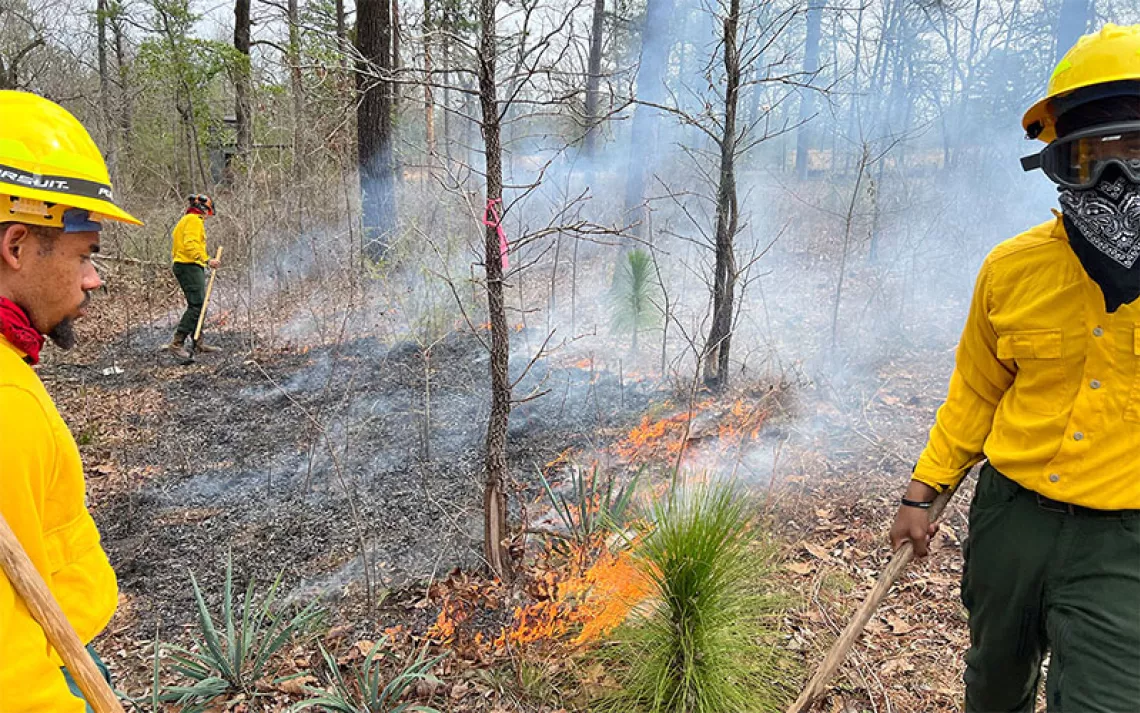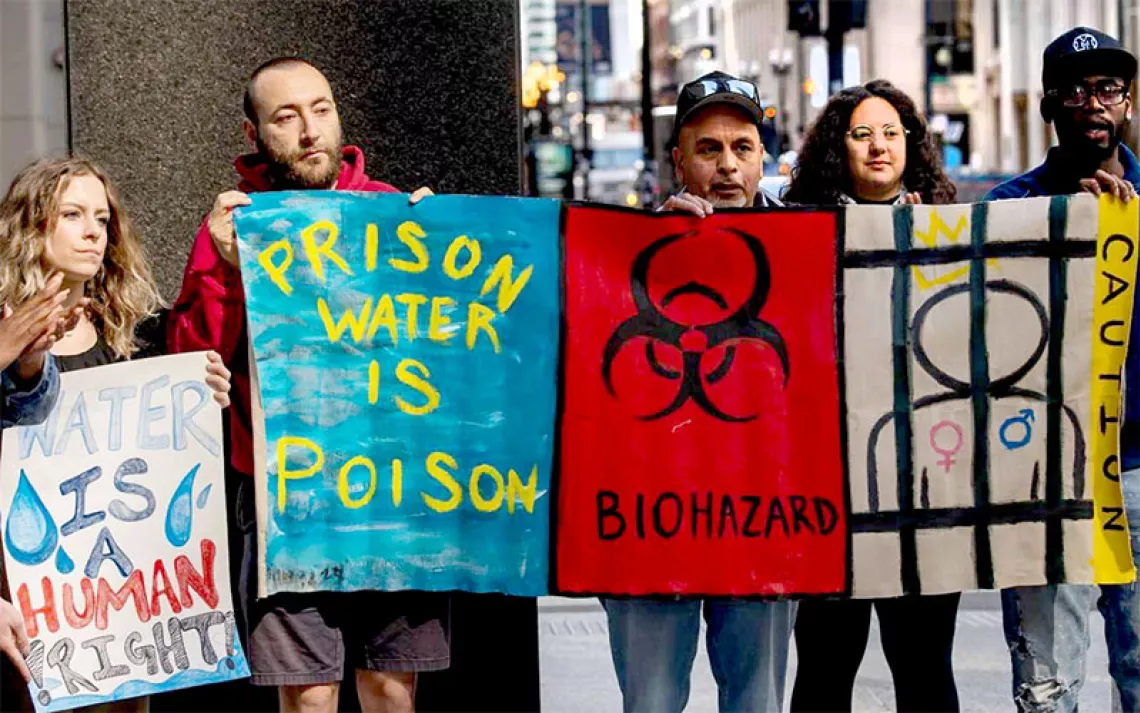Reparations for Houston's Historically Black Neighborhoods
How do you pay people for decades of exposure to carcinogenic chemicals?

Even though Sandra Edwards lives atop a plume of toxic creosote, she said, “I don't want to leave my community.”
Sandra Edwards has lived on Lavender Street in Houston’s Fifth Ward for 30 years. In the old days, she said, “Everyone was like family, even though we had no blood relation. We looked out for each other.” Willow Naomi Curry grew up in nearby Kashmere Gardens, another historically Black neighborhood. Its golden sunrises and sunsets and its wild sunflowers, primroses, magnolias, and pecans made her an environmentalist, she said. “I was in love with nature from such an early age. My backyard was a tool for discovery. I always felt so occupied, excited, and free growing up.”
Edwards’s and Curry’s neighborhoods adjoin the Union Pacific Englewood Yard, once the largest rail yard in the American South. That’s why they also share the pungent mothball smell of creosote, a highly flammable, tarlike substance the yard once used to preserve wooden railroad ties when the site was owned by Southern Pacific. Its smell doesn’t wash out of clothes. It sticks to rugs and furniture. Worse, it persists in a toxic plume underneath Northeast Houston.
“When it rains, it drifts off into runoff water, which sinks into nearby residents’ soil,” said James Dahlgren, a medical toxicology expert who has studied contaminated sites for decades. “Then the soil itself blows around, becomes airborne, goes into people’s homes, and they breathe it in. It’s a complete disaster every single step of the way.”
After decades of exposure to this cancer-causing chemical, residents are dying of cancer. Edwards has buried neighbor after neighbor and several loved ones—including her grandfather, who was diagnosed with bone cancer. “The plume sucked all the joy out of these neighborhoods. It sucked all the life out of us over here,” she said. Over in Kashmere Gardens, Curry realized in 2014 that something might be wrong when her mother was diagnosed with lung cancer and died within six weeks. Three years later, her father died from prostate cancer. A few months after that, a next-door neighbor died from pancreatic cancer. “After she passed, I was like, ‘What the hell is happening here?’ ” Curry said.
In 2019, the Texas Department of State Health Services (DSHS) confirmed a cancer cluster in the Fifth Ward and Kashmere Gardens. Many in those neighborhoods believed it was because of the creosote. “[The finding] indicates that the community is experiencing what they felt they were experiencing,” said Loren Hopkins, the Houston Health Department’s chief environmental officer. “They said that they feel like they’re getting cancer at higher rates than they should, and they are.” In 2021, the DSHS found a second cancer cluster, this time of childhood lymphoblastic leukemia, at rates nearly five times the national average.
Not much changed for Northeast Houston residents though. “Lives were ended unnecessarily—and with the knowledge of the corporations that were doing the polluting,” Curry said. “That’s a crime. We have to recognize these things as crimes that must be addressed.”
Community members are seeking accountability and action from Union Pacific. They want their soil remediated and medical bills paid for. They also insist that those who wish to be relocated must be helped. The company has conducted a cleanup program under the EPA's Resource Conservation and Recovery Act, but asserts that there is no proof that creosote caused the cancer cluster.
“How much proof do they need?” Edwards said. “They’re seeing what’s happening. They just don’t want to clean their mess up.”
Last July, then-mayor Sylvester Turner said he wanted to develop a voluntary relocation program for residents living above the creosote plume. The Houston Health Department conducted door-to-door surveys to figure out the residents’ health insurance and relocation needs, and in September the city council approved $5 million to help residents of the 110 lots on the plume move away. But current mayor John Whitmire pointed out that relocation could end up costing as much as $40 million. “Who in the world thinks $5 million is enough?” he asked.
Community members have mixed feelings about relocation, fearing that their departure would just pave the way for gentrification. Next to Edwards’s row house, there’s now a cluster of shiny white townhomes and a big new residential and retail complex. All this development could eventually price the original homeowners out of the area. Also, it means that only new residents would benefit from future cleanups. Curry insists on some money to compensate residents for property repair and medical expenses and treatments. To her, justice would mean remediating the soil. “We need Union Pacific to do everything in their power to fix the soil and see that the area is habitable,” she said.
Edwards feels similarly. “Why should I leave? Why would I learn a whole new place all over again? I don’t want to leave my community,” she said. “The city just needs to grant us what we need. Fix our houses, our soil. Make us whole again.”
This story has been updated and corrected since its original publication.
 The Magazine of The Sierra Club
The Magazine of The Sierra Club



